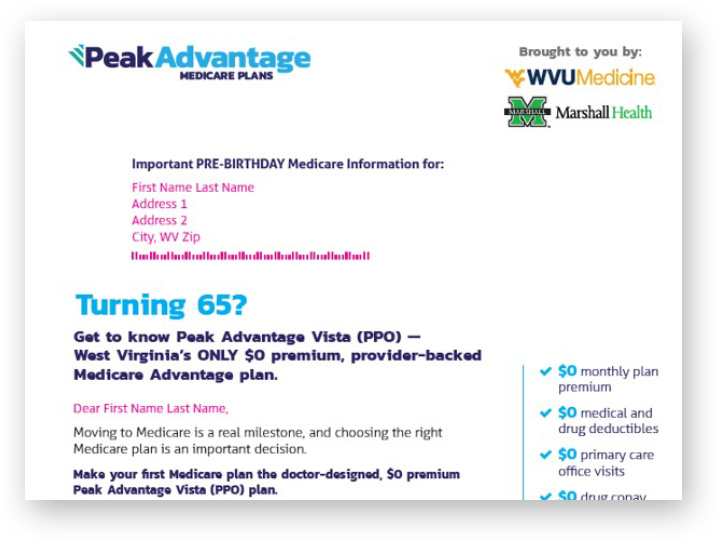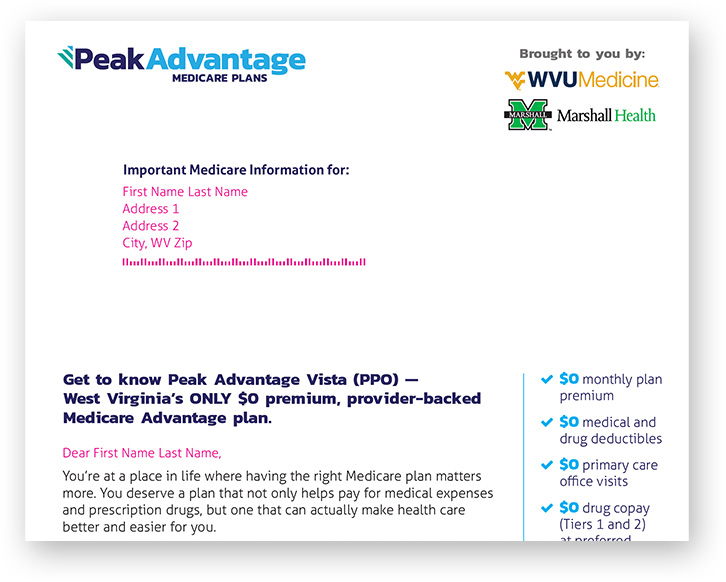The Question on Every Marketer’s Mind: Who Are You?
Katie Maule Boomer Marketing, Creative That Sells, DRTV, Digital Direct Marketing, Direct Mail, Email Marketing, Health Care Marketing, Insurance Direct Marketing, Marketing Analytics, Medicare Marketing, Millennials - Gen Y, Response Marketing, Trends and POVI had the honor of attending my niece’s high school graduation last spring. One particular speech caught my attention. The speaker asked the class of 2024 a simple question: “Who are you?”
This is the same question marketers ask, whether they’re helping a brand establish its identity or wondering who their audience is in an effort to make a sale.
To my dismay, the speaker answered the question on behalf of each student by sharing a series of clichéd quotes he gathered from their teachers — generic statements about work ethic, friendship, and learning.
Your high school teachers’ opinion of you is certainly not the answer to a quintessential question. And (more to the point of this blog post) a group of people — whether they’re a graduating class or a cohort of Medicare-eligible prospects — shouldn’t be defined by such limited data.
Data gathering
Before trying to connect with your audience, you have to know who you’re talking to. The good news? Research implies that if you talk to the right audience about the right product or service, they just may pay attention: Half of consumers (49%) actually enjoy ads for products they’re interested in, suggesting that relevancy is key.
The process of getting to know your audience starts with gathering data. Ideally, it’s high-quality, aggregated data you can use to identify your target audience, including segments within your target audience. Then, as you dig deeper, you can compare and contrast broad-market data against what you know about your current members.
While high-quality third-party audience data can be useful, especially as a resource for obtaining audiences that are segmented based on narrow interests, first-party data is the gold standard. (For information on developing a first-party data strategy, check out this recent blog post by Justin Stauffer.) There are several benefits to first-party data, including increased accuracy, long-term cost savings, better opportunities to personalize member experiences, and more.
In addition to using first-party data, talk to your clients’ sales teams, customer service representatives, and even your providers to find out what prospects and members are talking about. While anecdotal, their insight about what your local target audience cares about most is important. You may find out that prospects and members in one region of the country seek out plans with a grocery benefit, while a flexible benefit card is what “sells” plans in another region.
Segmentation: customized messaging
Segmenting your audience by certain variables is often the first step in personalizing your content. It allows you to customize messages based on relevant demographic, geographic, and behavioral information. For example, you can customize a Medicare Advantage plan letter based on a prospect’s age and whether they’ll be enrolling in a plan for the first time or switching from an existing plan.
The messaging for a new-to-Medicare audience (top) creates a feeling of excitement as the prospect approaches their 65th birthday. The messaging for the switcher audience (bottom) creates a sense of urgency — they deserve the best Medicare Advantage plan now.

Becoming eligible for Medicare is a big milestone — something to celebrate!

Now’s the time to get a better Medicare plan.
Personalization: customized experiences
Creating “personalized content” used to mean adding a recipient’s name to a letter or email. Now it’s much more involved.
In order to truly personalize your content, you need to be familiar with your prospects’ and members’ experiences and needs. Recognize their communication preferences by tracking their responses to your communications (on all channels) to determine the “next best action.” Identify their pain points by seeing which websites they visit and what products they buy.
If a marketing deliverable is created for everyone, it resonates with no one.
From there, create a custom experience for that member. For example, if they visit your Medicare FAQs web page, email them a link to download your Medicare Information Kit. If they attend a free, virtual Medicare webinar, send them a free gift along with a Medicare Pre-Enrollment Guide.
Although this data-gathering process sounds intrusive, research shows it’s appreciated: 69% of customers welcome personalization as long as it’s based on data they’ve explicitly shared with a business (another gold star for first-party data!).
Tools of the trade
A Customer Relationship Management (CRM) tool can help you manage disparate data and effectively segment, nurture, and target existing and potential members. CRMs are useful in identifying business opportunities and weaknesses and developing marketing and customer acquisition and retention strategies.
After segmenting your audience with the help of a CRM, some marketers (including DMW) use modeling and profiling, in addition to other strategies, to understand clients’ target audiences.
An effective model allows you to understand your market so you can cost-effectively target the prospects who are most likely to convert; gather information about audience size; and establish a baseline to monitor results and optimize future campaigns.
Profiles generally include data about target prospects, such as demographics (age, income, education level, etc.); phychographics (goals, values, habits, etc.); geographics (state, city, and county); and behaviors (product usage, engagement, purchasing history, etc.). More in-depth data from individuals’ digital journeys (web traffic analysis, email opens/clicks, engagement with social media, etc.) can also be included. Profiles can even include comparisons among ideal prospects, current members, and the market in general.
Personas are another valuable tool for strategically minded marketers. They differ from profiles because they’re fictional representations of individuals in your target audience. Both profiles and personas provide marketers with meaningful information about their audience, including their motivations, challenges, and decision-making process.
(If your data isn’t ideal and/or your “tools of the trade” are a work in progress, reach out. We can use what you have to start generating leads and sales while helping you develop a more robust marketing analytics strategy that’s powered by data science.)
Let the data tell the story

As a longtime marketing writer, thinking of my target audience in terms of who they are as people rather than data points helps me write better content. It can be difficult to visualize and write for a group of newly Medicare-eligible prospects in the northeast who like to shop at Walmart and use Facebook. On the other hand, I feel like I know a persona like “Betty” — a Medicare-eligible grandmother in Rhode Island who swears by Walmart’s muffin mix because it’s cheaper than the name brand (and tastes better!) and loves seeing pictures of her family on Facebook.
Although personas like Betty won’t make it into final deliverables, they bridge the gap between analytics and humanness. They inspire me to write warm and sincere content that’s personalized for a specific target audience.
The power of personalization
If a marketing deliverable is created for everyone, it resonates with no one. If your reader feels like you’re talking to just them, your message hits home.
Personalization also has a measurable benefit: it boosts ad performance. According to recent research by McKinsey, 76% of consumers are more likely to consider purchasing from brands that personalize content. The same research indicates that 66% of consumers think it’s important for brands to tailor messaging to their needs when they’re purchasing for the first time.
Extrapolating meaningful insights from consumer data helps us identify each customer’s pain points and strategically position our product or service as the ideal “solution” using the most effective positioning, language, and messaging.
Partner with DMW
When I think back to my niece’s graduation, I can’t help but remember that speech. I wish the question “Who are you?” had been rhetorical. Both data and introspection can yield amazing insights.
But when it comes to understanding who someone is for marketing purposes, data science and audience insights can tell us a lot. It may be impossible to know everything about a target audience, but after 40+ years in the industry, we know how to get results. See for yourself — get in touch!